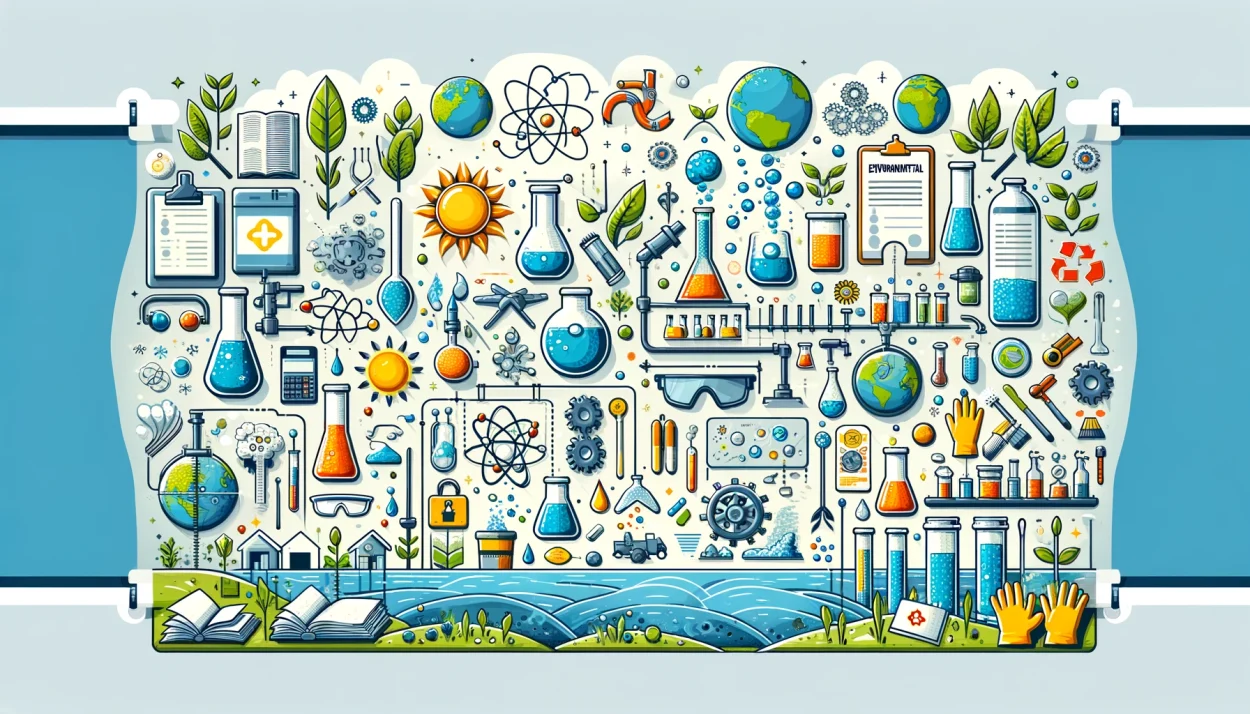
Acids, Bases, and Salts in Daily Life: Environmental Impact and Safety Practices

Acids, Bases, and Salts: Understanding the Chemistry Around Us
After exploring the intricate world of chemical reactions and equations, where we observed the transformations of matter, we delve into the fascinating realm of acids, bases, and salts. These substances are not only fundamental components of chemistry but also play a crucial role in our daily lives, from the food we consume to the cleaning products we use.
Acids: The Sour Tastemakers
Acids are substances that have a sour taste and turn blue litmus paper red. They release hydrogen ions (H⁺) when dissolved in water. Common examples include hydrochloric acid (HCl) found in stomach acid, acetic acid (CH₃COOH) in vinegar, and citric acid in citrus fruits. Acids play a vital role in various chemical reactions, including digestion and metabolism in our bodies.
Bases: The Bitter and Slippery Counterparts
Bases, in contrast to acids, have a bitter taste and a slippery texture. They turn red litmus paper blue and produce hydroxide ions (OH⁻) in water. Sodium hydroxide (NaOH), commonly known as lye, and calcium hydroxide [Ca(OH)₂], known as lime water, are examples of bases used in soap making and construction, respectively.
Salts: The Product of Neutralization
When an acid reacts with a base, they neutralize each other, forming water and a compound called salt. This reaction is fundamental to understanding how acids and bases interact. Common table salt (sodium chloride, NaCl) is the most familiar example, formed from the neutralization of hydrochloric acid by sodium hydroxide.
pH Scale: Measuring Acidity and Basicity
The pH scale, ranging from 0 to 14, measures how acidic or basic a solution is. A pH of 7 is neutral, values less than 7 indicate acidity, and values greater than 7 signify basicity. The pH scale is logarithmic, meaning each whole pH value below 7 is ten times more acidic than the next higher value, and each whole pH value above 7 is ten times more basic.
Everyday Applications and Implications
Acids, bases, and salts are integral to various industrial and household processes. Acids are used in car batteries and food preservation, while bases find applications in cleaning agents and medicine. Salts, aside from seasoning food, play roles in de-icing roads and water softening.
Environmental and Health Considerations
While acids, bases, and salts are essential, their handling requires care due to potential risks. Strong acids and bases can cause burns, and improper disposal can harm the environment. Understanding their properties helps us use them safely and sustainably.
In conclusion, the study of acids, bases, and salts opens up a world where chemistry meets practicality. These substances not only facilitate countless reactions and processes but also remind us of the importance of chemistry in our daily lives and the environment.
Practical Implications of Acids, Bases, and Salts
The chemistry of acids, bases, and salts extends far beyond laboratory experiments, playing a critical role in many industrial processes and our daily lives:
- Agriculture: Lime (calcium hydroxide), a base, is used to neutralize acidic soils, improving fertility for crop production.
- Medicine: Many medicines are formulated based on their acidic or basic properties to treat conditions like acidity, indigestion, and nutrient deficiencies effectively.
- Cleaning Products: Acids like citric acid and bases like sodium hydroxide are key ingredients in household cleaners, targeting different types of stains and dirt.
Environmental Considerations
While acids, bases, and salts are invaluable, their use and disposal demand careful environmental consideration:
- Acid Rain: The release of sulfur dioxide (SO₂) and nitrogen oxides (NOx) into the atmosphere, primarily from burning fossil fuels, forms acids that return to the surface as acid rain, harming ecosystems and structures.
- Soil pH Alteration: Excessive use of chemical fertilizers can alter soil pH, affecting nutrient availability and microbial activity, which can lead to reduced soil fertility over time.
- Water Quality: Industrial discharge of acidic or basic effluents can disrupt the pH balance of natural water bodies, adversely affecting aquatic life and water quality.
Safety Measures
Handling acids and bases requires adherence to safety protocols to prevent accidents and injuries:
- Personal Protective Equipment (PPE): Use of gloves, goggles, and protective clothing is essential when handling strong acids and bases to prevent skin burns and eye injuries.
- Proper Storage: Acids and bases should be stored in appropriately labeled containers away from direct sunlight and in a cool, dry place to prevent degradation and accidental exposure.
- Spill Management: In case of spills, neutralizing agents should be used to neutralize acids or bases before cleanup, reducing the risk of harm to individuals and the environment.
Conclusion
The study of acids, bases, and salts not only enriches our understanding of chemistry but also emphasizes the importance of responsible usage, safety, and environmental stewardship. By appreciating the science behind these substances and implementing sustainable practices, we can harness their benefits while minimizing their impact on our planet and health.